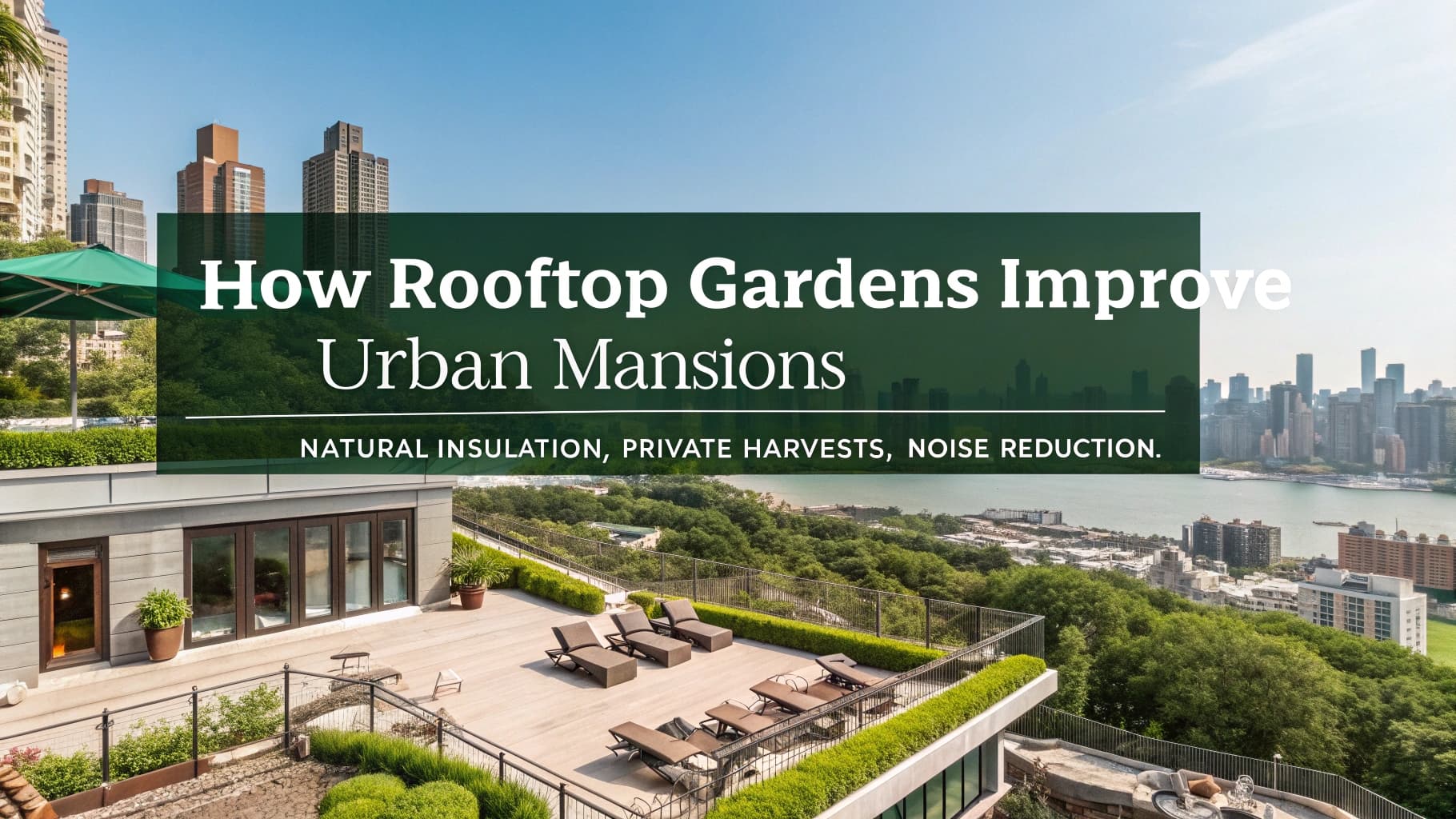Rooftop gardens have emerged as a transformative element in urban architecture, providing a unique blend of nature and urban living. These green spaces, situated atop buildings, offer a refreshing contrast to the concrete jungles that dominate many cityscapes. The concept of utilizing rooftops for gardening is not entirely new; it has roots in ancient civilizations where gardens were cultivated on rooftops to maximize space and enhance aesthetics.
However, the modern interpretation of rooftop gardens has evolved significantly, incorporating advanced design principles and sustainable practices that cater to contemporary urban lifestyles. The resurgence of interest in rooftop gardens can be attributed to a growing awareness of environmental issues, urban heat islands, and the need for sustainable living solutions. As cities continue to expand and populations increase, the demand for green spaces becomes more pressing.
Rooftop gardens serve as a vital response to this challenge, offering not only aesthetic appeal but also functional benefits that enhance the quality of life for urban residents. By integrating greenery into high-rise buildings, architects and urban planners are redefining the relationship between nature and urban environments, creating spaces that promote well-being and ecological balance.
Benefits of Rooftop Gardens for Urban Mansions
Rooftop gardens provide a multitude of benefits for urban mansions, enhancing both their aesthetic appeal and functional utility. One of the most significant advantages is the creation of private green spaces that offer residents a serene escape from the hustle and bustle of city life. These gardens can be designed to include various elements such as seating areas, water features, and even outdoor kitchens, transforming rooftops into luxurious retreats.
The ability to enjoy nature without leaving home is a compelling reason for homeowners to invest in rooftop gardens. In addition to their aesthetic contributions, rooftop gardens play a crucial role in improving air quality and reducing noise pollution. Urban areas are often plagued by high levels of air contaminants and excessive noise, which can negatively impact residents’ health and well-being.
The vegetation in rooftop gardens acts as a natural filter, absorbing pollutants and releasing oxygen, thereby enhancing the overall air quality. Furthermore, the plants help to absorb sound, creating a quieter environment that allows residents to relax and enjoy their outdoor spaces without the intrusion of city noise.
Design and Construction of Rooftop Gardens
The design and construction of rooftop gardens require careful planning and consideration of various factors, including structural integrity, climate conditions, and plant selection. One of the primary concerns when creating a rooftop garden is ensuring that the building can support the additional weight of soil, plants, and any other features included in the design. Structural engineers often collaborate with landscape architects to assess load-bearing capacities and make necessary modifications to accommodate the garden.
Climate plays a pivotal role in determining which plants will thrive in a rooftop garden. Urban environments can experience extreme temperature fluctuations due to heat absorption by buildings and pavement. Therefore, selecting drought-resistant plants or those that can withstand high winds is essential for the success of a rooftop garden.
Additionally, incorporating features such as irrigation systems or rainwater harvesting can help maintain plant health while conserving water resources. The design process also involves creating aesthetically pleasing layouts that consider factors like sunlight exposure, wind patterns, and accessibility.
Environmental Impact of Rooftop Gardens
Rooftop gardens have a profound environmental impact that extends beyond their immediate surroundings. One of the most notable benefits is their ability to mitigate the urban heat island effect, a phenomenon where urban areas experience significantly higher temperatures than their rural counterparts due to human activities and infrastructure. By introducing vegetation into these spaces, rooftop gardens help cool the surrounding air through evapotranspiration, thereby reducing energy consumption for cooling buildings.
Moreover, rooftop gardens contribute to biodiversity in urban settings by providing habitats for various species of birds, insects, and other wildlife. As cities expand, natural habitats are often destroyed or fragmented, leading to declines in local biodiversity. Rooftop gardens can serve as vital green corridors that support pollinators like bees and butterflies while also offering refuge for birds seeking nesting sites.
This enhancement of urban biodiversity not only benefits wildlife but also fosters a greater connection between residents and nature.
Economic and Social Benefits of Rooftop Gardens
The economic advantages of rooftop gardens are multifaceted, impacting property values, energy costs, and even local economies. Properties with well-designed rooftop gardens often see an increase in market value due to their unique appeal and the added outdoor living space they provide. Homebuyers are increasingly drawn to properties that offer green amenities, making rooftop gardens an attractive feature in competitive real estate markets.
In addition to enhancing property values, rooftop gardens can lead to significant reductions in energy costs. By providing insulation during hot summer months and retaining heat during colder seasons, these gardens can lower heating and cooling expenses for homeowners. Furthermore, they can reduce stormwater runoff by absorbing rainwater, which alleviates pressure on municipal drainage systems and reduces the risk of flooding during heavy rainfall events.
This not only saves money for homeowners but also benefits local governments by decreasing infrastructure maintenance costs. Socially, rooftop gardens foster community engagement and interaction among residents. In urban settings where space is often limited, these gardens can serve as communal areas where neighbors gather to socialize or participate in gardening activities.
This sense of community can enhance social cohesion and improve overall quality of life for residents. Additionally, rooftop gardens can be utilized for educational purposes, providing opportunities for workshops on sustainable gardening practices or environmental awareness initiatives.
Maintenance and Upkeep of Rooftop Gardens
Efficient Watering Practices
Irrigation systems are often integrated into rooftop garden designs to facilitate efficient watering practices. Drip irrigation systems can be particularly beneficial as they deliver water directly to the plant roots while minimizing waste.
Low-Maintenance Plant Options
Additionally, incorporating native plants or drought-resistant species can reduce maintenance needs by requiring less frequent watering once established.
Seasonal Maintenance Adjustments
Seasonal changes also necessitate adjustments in maintenance routines; for instance, winterizing plants or preparing them for spring growth requires careful planning to ensure their longevity.
Case Studies of Urban Mansions with Rooftop Gardens
Several urban mansions around the world exemplify the successful integration of rooftop gardens into luxury living spaces. One notable example is the Bosco Verticale (Vertical Forest) in Milan, Italy. This innovative residential complex features two towers adorned with over 9,000 trees and 20,000 plants on its terraces and balconies.
The design not only enhances the aesthetic appeal but also contributes significantly to air quality improvement and biodiversity within the city. Another remarkable case is the High Line Hotel in New York City, which boasts a stunning rooftop garden that serves as an oasis amidst the bustling urban environment. The garden features native plants that thrive in the local climate while providing guests with breathtaking views of the Manhattan skyline.
This space not only enhances the hotel’s appeal but also serves as a venue for events and gatherings, showcasing how rooftop gardens can be multifunctional. In Singapore, known for its commitment to green architecture, the Marina Bay Sands resort features an iconic rooftop garden that spans over 1 hectare. This garden includes an infinity pool overlooking the city skyline and showcases a variety of tropical plants that thrive in Singapore’s humid climate.
The integration of such green spaces into high-profile developments highlights the potential for rooftop gardens to redefine luxury living while promoting sustainability.
Conclusion and Future Trends in Rooftop Garden Development
As urbanization continues to accelerate globally, the future of rooftop gardens appears promising with increasing recognition of their multifaceted benefits. Innovations in technology are paving the way for more efficient designs and maintenance practices that will make rooftop gardening more accessible to homeowners and developers alike. Vertical gardening systems and hydroponics are gaining traction as viable options for maximizing space while minimizing resource use.
Moreover, as cities grapple with climate change challenges such as rising temperatures and extreme weather events, rooftop gardens will play an essential role in enhancing urban resilience. Policymakers are beginning to recognize this potential; initiatives promoting green roofs are being implemented in various cities worldwide as part of broader sustainability goals. The integration of green infrastructure into urban planning will likely become more prevalent as communities strive to create healthier living environments.
In conclusion, rooftop gardens represent a significant evolution in urban living that harmonizes nature with architecture while addressing pressing environmental issues. Their benefits extend beyond aesthetics; they enhance property values, improve air quality, foster community engagement, and contribute positively to biodiversity. As we look ahead, it is clear that rooftop gardens will continue to shape our cities into greener, more sustainable spaces that prioritize both human well-being and ecological health.
FAQs
What are rooftop gardens?
Rooftop gardens are green spaces created on the rooftops of buildings, including urban mansions. They can be designed with a variety of plants, trees, and other greenery to create a natural and sustainable environment.
How do rooftop gardens improve urban mansions?
Rooftop gardens provide numerous benefits to urban mansions, including improved insulation, reduced energy costs, stormwater management, and increased property value. They also create a peaceful and aesthetically pleasing environment for residents.
What are the environmental benefits of rooftop gardens?
Rooftop gardens help to reduce the urban heat island effect, improve air quality, and provide habitat for wildlife. They also contribute to the overall sustainability of urban areas by reducing the carbon footprint of buildings.
What are the challenges of installing rooftop gardens on urban mansions?
Challenges of installing rooftop gardens on urban mansions may include structural considerations, waterproofing, irrigation, and maintenance. It is important to work with experienced professionals to ensure the success of a rooftop garden project.
Are there any regulations or restrictions for rooftop gardens on urban mansions?
Local building codes, zoning regulations, and homeowner association rules may have specific requirements for rooftop gardens. It is important to check with the relevant authorities and obtain any necessary permits before installing a rooftop garden.

